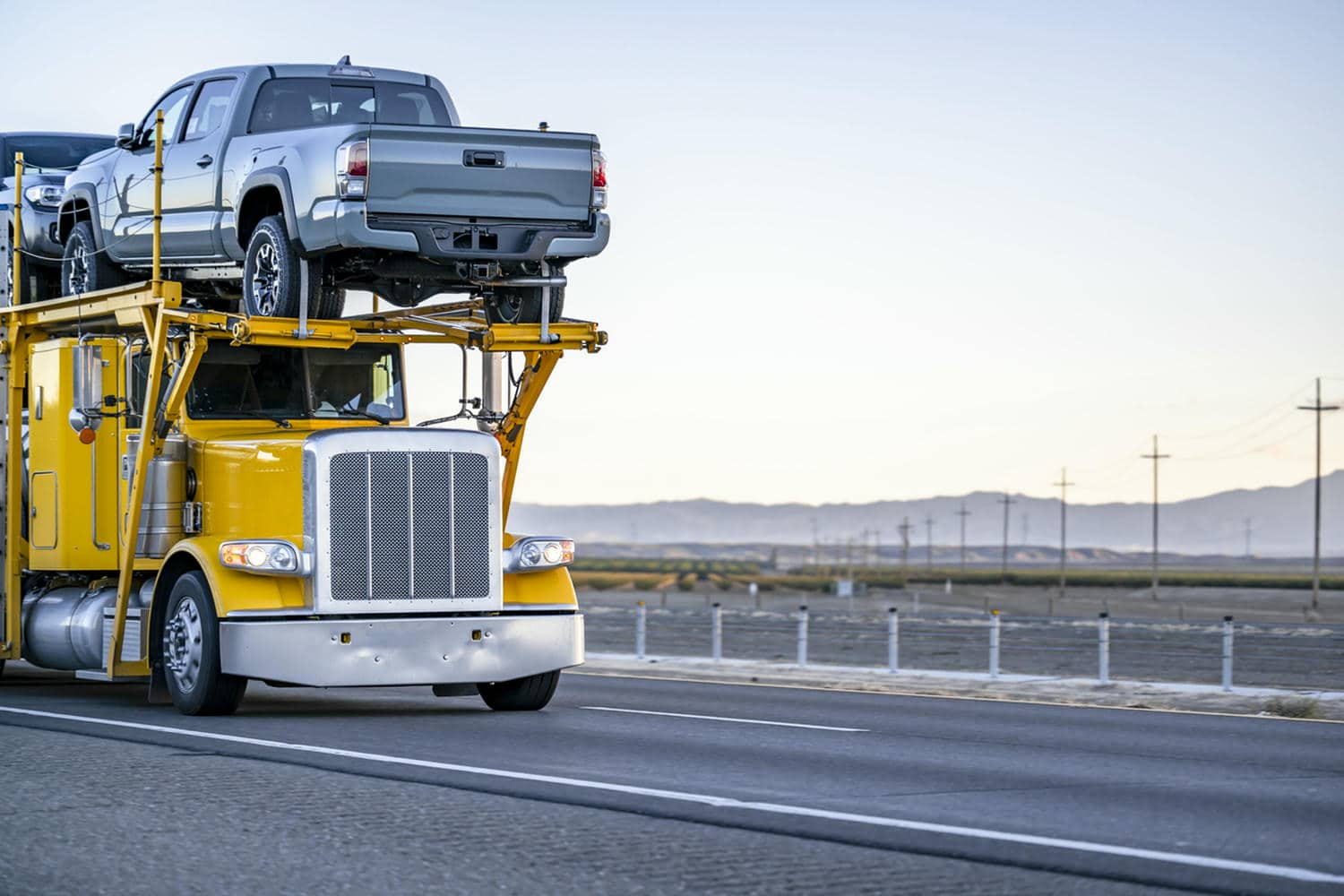Shipping a car can be costly, leaving many wondering how to save money on car shipping. This article will explore practical strategies, including selecting the right transport method and timing your shipment effectively. Readers will learn about available discounts and how preparing their vehicle can reduce costs. Addressing common concerns about expenses, this guide aims to equip individuals with the knowledge to make informed decisions, ensuring an affordable car shipping experience.
- Understanding various factors can help determine car shipping costs effectively
- Choosing open transport is often more cost-effective than selecting enclosed transport options
- Shipping during off-peak seasons could yield significant savings on car transport expenses
- Proper vehicle preparation reduces the risk of additional fees during the shipping process
- Evaluating insurance options is essential for balancing cost and protection during vehicle transport

Car shipping costs can vary significantly based on several factors. A breakdown of typical car shipping fees reveals the components that contribute to overall expenses. Additionally, various elements influence transport prices, including the level of risk involved and the convenience of the chosen shipping method. Seasonality can also play a role in costs, as demand fluctuates throughout the year, impacting pricing strategies. Continue reading to learn how to save money on car shipping before you book your auto transport.
When considering car shipping services, it’s essential to understand the different fees associated with the process. The initial expense often includes a base rate for transporting the vehicle, which can fluctuate based on factors such as distance, transport method, and the condition of the vehicle. For example, opting for an open carrier may provide a more economical choice, whereas enclosed transport offers added protection at a higher cost.
Additional fees may surface based on the specific requirements of the shipping process. For instance, extra charges may apply if a customer chooses to have the vehicle delivered to a remote location rather than a central hub. Furthermore, fees related to wear and tear on the vehicle during transportation should be factored into the total expense, as these can impact the overall cost and customer’s experience.
Maintaining transparency in pricing is crucial, and reputable car shipping services typically adhere to industry standards, often recognized by organizations like the Better Business Bureau. This ensures that potential customers can make informed decisions, comparing prices and services while being aware of any additional expenses that may arise during the shipping process. Understanding these cost components will help customers achieve better financial outcomes when planning their vehicle transport needs.
Several key factors influence car transport prices and understanding these can help customers save money. The method of auto shipping selected plays a significant role; for example, using an open carrier is usually more affordable than an enclosed transport option. Additionally, distance and route complexity can affect the overall price, as longer and more complex routes typically involve higher costs.
Customer service quality also influences pricing structures among various carriers. Companies that offer robust support and clear policies regarding costs and services may charge a premium; however, this added expense can be worth it for peace of mind and assurance during the transport process. Customers seeking cost-effective options might want to research reviews of service providers, particularly focusing on experiences related to customer care and satisfaction.
Seasonal demand is another variable impacting prices in the auto shipping industry. During peak seasons, such as summer or before major holidays, prices tend to increase due to higher demand for vehicle transport. By planning ahead or considering off-peak times for shipping, customers can significantly reduce their transportation costs. For those looking to maximize savings, evaluating the factors affecting prices is essential:
- Shipping method
- Distance and route
- Customer service and policies
- Seasonal demand
Seasonality significantly affects car shipping costs. During peak times, such as summer months or around major holidays, demand tends to rise, resulting in higher car shipping quotes. This increased demand often leads to a more competitive pricing environment, which can strain budgets for those looking to transport their vehicles.
Additionally, shipping a vehicle during off-peak seasons can yield substantial savings. For instance, when fewer people are requesting transport services, carriers may lower their prices to attract more business. Shippers who plan ahead and are flexible with their timelines can take advantage of these reduced rates, ensuring that their vehicle reaches its destination safely while keeping costs manageable.
Understanding the link between seasonality and pricing can improve a customer’s auto transport experience. For instance, monitoring trends and quotations during various seasons allows for better budgeting and planning. By considering factors like mileage, tank capacity, and the safety measures offered by carriers, customers can make informed decisions that align with their financial goals and needs.
|
Season |
Demand Level |
Car Shipping Quotes |
Potential Savings |
|---|---|---|---|
|
Summer |
High |
Increased |
Low |
|
Winter |
Moderate |
Average |
Moderate |
|
Spring |
Low |
Decreased |
High |
|
Fall |
Low |
Decreased |
High |
Now that the costs of car shipping are clear, it’s time to consider how to move your vehicle. The right transport method can make all the difference between a simple process and a stressful one.

Comparing open and enclosed transport is crucial when aiming to save money on car shipping. Open carriers typically use highways and offer cost-effective options for standard vehicles, while enclosed transport can be beneficial for valuable items like vintage cars, protecting them from debris. Additionally, assessing the impact of flatbed transport and its suitability for various types of vehicles can further help in selecting the optimal method, factoring in considerations like the vehicle’s fuel tank and towing requirements.
When comparing open and enclosed transport methods, it’s essential to understand the distinct advantages and disadvantages of each option. Open transport is generally more cost-effective, allowing customers to save cash while securely shipping their vehicles. However, this method exposes vehicles to elements like dust and debris, which may not be ideal for all car owners.
Enclosed transport offers a higher level of protection for vehicles, making it suitable for valuable cars or inventory that requires extra care. This method shields vehicles from potential accidents and environmental hazards, ensuring they arrive in optimal condition. Although enclosed transport usually incurs higher fees due to its specialized nature, the assurance provided may be worth the investment for many customers.
For those considering their options, understanding the implications of using rail transport can also provide additional insights into cost-saving strategies. Rail transport often presents an economical alternative for shipping multiple vehicles at once, allowing for further cost reductions. Knowing the benefits of each method can help customers make informed decisions based on their specific needs and budget constraints:
- Open auto transport is budget-friendly but exposes vehicles to elements.
- Enclosed auto transport provides optimal protection for valuable cars.
- Rail transport may save money for shipping multiple vehicles.
Flatbed transport serves as a viable option for those seeking cost-effective car shipping services. This method is particularly beneficial for vehicles that may not fit conventional transport methods or require special handling, such as cars with unique dimensions or those that are non-operational. By utilizing a flatbed, shippers can avoid added pressure from complex loading processes, ensuring that vehicles are loaded safely and securely.
One of the advantages of flatbed transport is that it allows for easy access and loading, especially when dealing with vehicles that are inoperable. Car shipping companies often utilize a winch to secure such vehicles, reducing the risk of damage during transport. Choosing a reputable carrier with the right liability insurance is essential to ensure proper protection against any potential issues, thus providing peace of mind throughout the shipping process.
Customers should assess their specific needs when considering flatbed transport as part of their car shipping plans. Factors such as vehicle type, distance, and delivery requirements can influence both the cost and the choice of transport method. By choosing flatbed transport from a trusted carrier, customers can effectively manage shipping expenses while ensuring their vehicle is transported safely and securely:
- Flatbed transport is ideal for unique or non-operational vehicles.
- A winch can simplify loading and securing vehicles on flatbeds.
- Reputable carriers provide liability insurance for added protection.
Selecting the optimal transport method for a vehicle can significantly influence shipping fees and overall satisfaction. For classic cars, owners may prefer enclosed transport due to the added protection against weather and debris, even if the cost is higher. This choice is often offset by the peace of mind that comes from knowing a valuable vehicle is secured properly throughout the journey.
Weight is another important factor when determining the best transport option. Heavier vehicles may lead to increased fees, especially with certain transport methods. Understanding how the weight of a vehicle impacts transport costs enables customers to better estimate their shipping expenses and select an option that fits both their vehicle’s needs and budget.
Conducting a thorough inspection of the vehicle before shipping is crucial, as it helps identify any pre-existing conditions that might influence transport decisions. By documenting the state of the vehicle, owners can clarify any potential damage claims with the transport company. Taking these steps not only aids in cost management but also ensures that customers enjoy a smoother and more transparent transport process.
Choosing a transport method is just the first step. Timing your shipment can offer significant savings, and understanding when to ship makes all the difference.

Shipping vehicles during off-peak seasons can lead to lower costs, as demand tends to wane, allowing customers to capitalize on competitive pricing. Flexible scheduling further enhances savings, permitting individuals to choose the most cost-effective options. Additionally, planning ahead and booking in advance not only secures better rates but also ensures quality of service through reliable communication with carriers, aligned with regulations from the United States Department of Transportation based on specific zip codes.
Shipping costs, especially for a pickup truck or any other vehicle, can decrease significantly during off-peak seasons. Fewer people looking to transport their cars means less competition among carriers, which often leads to lower prices. This environment allows shippers to offer more favorable rates, saving customers money while still ensuring their vehicle’s safe transportation.
Moreover, during off-peak times, companies have more availability and flexibility in scheduling pickups and deliveries, which can lead to further savings. For instance, a carrier might have the capacity to reduce fees when transporting vehicles like trucks or cars to various ports due to lower traffic on the roads. This efficiency can help maintain a smoother process without compromising service quality.
Additionally, customers seeking to ship vehicles can benefit from planning ahead during these quieter periods. Not only do they secure better rates, but they also experience less stress while navigating logistics. By obtaining necessary license and registration paperwork well in advance, customers can streamline their shipping experience and ensure their engine is in optimal condition, ready for a prompt pickup when the time comes.
Flexible scheduling provides significant advantages for customers looking to save money on car shipping. By allowing more leeway in pickup and delivery times, customers can take advantage of lower rates, as carriers often have more availability, leading to reduced competition and better deals. This approach is particularly beneficial for those shipping vehicles like compact cars, where the shipping method can be adjusted based on the carrier’s scheduling preferences without compromising service quality.
Maintaining flexibility in scheduling enables customers to conduct thorough research on various shipping options. Knowledge of different pricing structures allows them to identify the most cost-effective solutions provided by truck drivers and transport companies. When customers are open to various timeframes, they may find opportunities for discounted rates, ultimately lowering their overall transport expenses.
Moreover, an adaptable shipping schedule helps mitigate the stresses associated with tight deadlines. Customers can ensure their cargo is transported efficiently, without incurring additional costs from rushed services, which might occur with fixed scheduling. This strategic approach not only results in better financial outcomes but also contributes to a more seamless transport experience, making it easier for customers to focus on other aspects of their relocation or vehicle management needs.
Booking car shipping in advance is one of the most effective strategies for saving money on transportation costs. This proactive approach allows customers to secure better rates, especially for vehicles like sedans and luxury cars, which may incur higher shipping fees when demand peaks. By planning ahead, customers can capitalize on reduced competition among carriers, leading to more favorable quotes without compromising service quality.
Effective logistics management is key to ensuring a smooth shipping process. When customers take the time to arrange their shipments well before the desired transport date, they not only lock in lower prices but also gain the flexibility to choose optimal delivery routes. This can be particularly beneficial for long-distance hauls, where factors like road debris and varying weather conditions may arise, affecting both safety and expenses.
Furthermore, booking in advance allows shippers to better prepare for the vehicle transport process. Customers can gather all necessary documentation and confirm that their vehicles are in optimal condition for travel. This ensures that their sedan or luxury car can avoid potential damages from road debris during transit, providing peace of mind throughout the shipment.
|
Benefit |
Description |
|---|---|
|
Cost Savings |
Securing lower rates by booking early reduces transportation expenses. |
|
Improved Logistics |
Flexible scheduling helps manage routes and avoid complications. |
|
Vehicle Preparation |
Allows time to ensure vehicles are in optimal condition before transport. |
Timing your shipment can lead to significant savings. Next, there are discounts and promotions waiting for those who know where to look.

Utilizing seasonal discounts can significantly reduce car shipping costs, offering savings during specific times of the year. Finding membership or referral programs often rewards customers with additional savings on transport fees. Moreover, negotiating rates with transport companies can lead to more favorable pricing. Each of these strategies provides practical insights to help customers achieve their budget-friendly car shipping goals.
Utilizing seasonal discounts can significantly lower car shipping costs, providing a valuable opportunity for customers to save money. Many transport companies offer special rates during specific times of the year, particularly during slower months when demand decreases. By staying informed about these promotions, individuals can make strategic decisions about when to schedule their vehicle shipments, ultimately enhancing their budget management.
For instance, late fall and early spring often present opportunities for reduced pricing as fewer customers seek car transportation. During these periods, individuals can take advantage of these advantageous rates without compromising service quality. Understanding the timing of these discounts allows customers to plan their shipping needs around the best possible deals, ensuring efficient use of their resources.
Finding membership or referral programs can yield significant savings when shipping a vehicle. Many car shipping companies offer incentives for customers who join their loyalty programs, allowing them to enjoy discounts on future transport services. These programs often require a simple sign-up process, which can provide access to special rates and exclusive offers that are not available to the general public.
Referral programs also serve as an excellent opportunity for customers to save on shipping costs. By encouraging friends or family to use the same car transport service, individuals may receive a discount or credit toward their next shipment for each new customer referred. This method not only benefits those shipping their vehicles but also creates a network of satisfied clients who can share positive experiences with the service provider.
It is beneficial for customers to regularly check their preferred transport company’s website or contact their customer service representatives to inquire about any available membership or referral programs. Staying informed about these opportunities empowers customers to maximize their savings while ensuring their vehicles are transported safely and efficiently. With careful research and proactive engagement, customers can take full advantage of these programs to lower their car shipping expenses significantly.
Negotiating rates with transport companies can be an effective strategy for customers looking to save money on car shipping. Many transport providers are open to discussions regarding pricing, especially if customers demonstrate flexibility in their transport dates. By expressing willingness to adapt to the carrier’s schedule, customers may find that they can leverage this flexibility to secure a better rate.
It is also beneficial for customers to conduct thorough research on various transport companies before initiating negotiations. Knowing the typical price range for shipping vehicles can give customers a solid foundation for discussions. By presenting quotes from competitors or expressing loyalty to transport services they have previously used, customers can bolster their position in securing a more favorable deal.
When engaging in negotiations, clear communication about budget constraints is essential. Transport providers appreciate transparency, and many will work with clients to customize pricing arrangements that meet both parties’ needs. Building a rapport with the shipping company and demonstrating a genuine interest in their services can lead to potential discounts that may not be advertised:
|
Negotiation Strategy |
Description |
|---|---|
|
Flexibility in Dates |
Being open to different pickup and delivery dates can lead to better rates. |
|
Research Competitors |
Knowledge of market rates strengthens leverage in negotiations. |
|
Clear Budget Communication |
Discussing budget constraints openly can yield tailored pricing. |
With savings in hand, the next step requires careful thought. Preparing your vehicle for transport ensures a smooth journey ahead.

Proper preparation of a vehicle for transport is vital to minimizing car shipping costs. Effective maintenance tips can help avoid extra fees that might arise from mechanical issues. Documenting the vehicle’s condition before transport ensures that any pre-existing damages are noted, providing clarity and protection during the shipping process. These steps collectively contribute to a smoother and more cost-efficient transport experience.
Proper preparation of a vehicle before shipping can significantly lower costs and enhance the overall transport experience. Ensuring that the vehicle is in optimal condition helps prevent unexpected mechanical failures during transit, which can lead to additional fees. To begin, customers should check fluid levels, tire pressure, and battery status, ensuring everything is functioning well prior to pickup.
Documenting the vehicle’s condition with photographs is another essential step in the preparation process. By taking clear pictures from various angles, owners create a visual record of their vehicle’s state before transport. This can prove invaluable if any disputes arise concerning damages during shipping, helping to clarify pre-existing issues clearly.
Lastly, removing personal items and ensuring that the fuel tank is no more than a quarter full reduces weight, further optimizing transport costs. By undertaking these vital steps, customers can streamline the shipping process effectively and achieve savings while securing their vehicle’s safe delivery. Consider the following preparation tips to minimize potential costs:
- Check and maintain vehicle fluid levels and tire pressure.
- Document the vehicle’s existing condition with photographs.
- Remove personal belongings and limit fuel levels.
Ensuring a vehicle is well-maintained prior to transport can effectively minimize additional fees. Customers should check essential fluid levels, including oil, coolant, and brake fluid, as well as tire pressure, to avoid potential issues that could arise during shipping. Addressing these maintenance needs not only helps prevent breakdowns but also ensures that the vehicle is in optimal condition upon arrival.
Another critical step is to remove any personal belongings from the vehicle. Leaving items inside can add unnecessary weight, which may lead to increased shipping costs. Additionally, personal items can be at risk of damage during transit, so clearing out the vehicle aids in both cost savings and the safety of valuable possessions.
Documenting the vehicle’s condition with photographs is also a prudent measure. Capturing images of the vehicle from different angles creates a clear record that can protect against disputes regarding damages during transport. This preparation step contributes to a smoother shipping experience, ultimately aiding in savings and peace of mind for the owner:
|
Preparation Steps |
Description |
|---|---|
|
Check Fluid Levels |
Ensures the vehicle is functioning properly and prevents issues during transport. |
|
Remove Personal Items |
Avoids extra weight and protects valuables from potential damage. |
|
Document Condition |
Provides a record for disputes and ensures awareness of prior damage. |
Documenting the vehicle’s condition prior to transport is pivotal for avoiding disputes and ensuring a smooth shipping experience. Taking detailed photographs from multiple angles helps create a visual record, clarifying any pre-existing scratches or dents. This documentation is vital if any questions arise regarding the vehicle’s state upon delivery, providing clear evidence of its condition before the journey.
When preparing for car shipping, owners should not only capture images but also note any specific issues or concerns related to the vehicle. This information can be shared with the transport company, allowing them to understand the vehicle’s unique requirements and potential vulnerabilities. By effectively communicating these details, owners can help carriers take extra precautions during transportation, which ultimately safeguards the vehicle and reduces the likelihood of incurring additional fees.
In addition to photographic documentation, maintaining an organized file of all related paperwork enhances the shipping process. Documentation can include maintenance records or inspection results that highlight the vehicle’s operational state. This thorough preparedness not only fulfills the transport company’s requirements but also contributes to a more efficient and cost-effective car shipping experience for the owner, promoting peace of mind throughout the process.
With your vehicle ready for the journey, the next step is to consider how to protect it along the way. Understanding your insurance options will ensure peace of mind as your car travels across the country.

Evaluating mandatory coverage versus additional insurance is crucial for customers looking to save money on car shipping. Understanding how insurance impacts total costs and implementing strategies to lower insurance expenses can lead to significant savings. Each of these aspects provides practical insights, helping customers navigate their options effectively while ensuring their vehicle is adequately protected throughout the transport process.
Understanding the difference between mandatory coverage and additional insurance is essential for customers seeking to save money on car shipping. Mandatory coverage is often included in the pricing of transport services, providing a basic level of protection. Customers should closely review the terms of this coverage to ensure it aligns with their expectations and protects their vehicle sufficiently during transit.
In contrast, additional insurance offers enhanced protection, which may be advisable for high-value vehicles or those with unique characteristics. While it entails extra costs, this option often brings peace of mind during transport, knowing the vehicle is safeguarded against potential damages. Shippers might weigh the cost of this insurance against the value of the vehicle to make an informed decision on whether the extra expense is justified.
Furthermore, customers should also inquire about the extent of coverage provided by the transport company to avoid surprises later. Understanding any deductibles, exclusions, or limitations of both mandatory and additional insurance ensures that customers are well-prepared for any potential issues. This transparency is vital in budgeting for car shipping, as it impacts the overall cost and helps customers set realistic expectations for their vehicle’s safety during transport.
Insurance plays a significant role in determining the overall cost of car shipping. Many transport companies include a basic level of mandatory coverage in their fees, which offers minimal protection. Customers should carefully evaluate this coverage to ensure it meets their needs, especially for high-value or specialty vehicles.
In addition to mandatory coverage, customers have the option to purchase additional insurance for greater peace of mind. This extra layer of protection typically comes at a higher cost but may be worthwhile for those transporting luxury or classic cars. Understanding the specific terms and conditions associated with both types of coverage helps customers make informed decisions that align with their budget and vehicle value.
Furthermore, the choice of insurance can influence how much customers pay upfront and in the event of any damages during transport. Policies with higher deductibles generally lower the upfront cost but could lead to higher expenses later if a claim is necessary. Using the right strategy for insurance can ultimately contribute to cost savings in the car shipping process:
|
Coverage Type |
Cost Implications |
Best For |
|---|---|---|
|
Mandatory Coverage |
Lower upfront costs; basic protection |
Standard vehicles |
|
Additional Insurance |
Higher upfront costs; enhanced protection |
Luxury or classic vehicles |
To effectively lower insurance expenses associated with car shipping, customers should first take the time to review their existing policies to ensure they understand the coverage they already possess. Many auto insurance plans may include coverage for transportation, so verifying this can help reduce the need for additional insurance when using a shipping service. This approach not only simplifies the process but may also lead to significant savings on overall transport costs.
Engaging in discussions with transport companies about their insurance offerings is another practical strategy for reducing expenses. Many companies provide optional insurance policies that can be tailored to individual needs. By comparing these options and negotiating rates, customers might find a plan that aligns better with their budget while still offering adequate protection for the vehicle.
Lastly, customers should consider adjusting their coverage limits based on the value of the vehicle being shipped. For standard vehicles, basic coverage might suffice, reducing the overall insurance cost. However, for higher-value vehicles, customers can evaluate whether the additional investment in insurance offers them the peace of mind they seek during transport, ensuring they are making an informed decision that balances cost and protection.

Saving money on car shipping is essential for maximizing budget efficiency while ensuring a hassle-free transport experience. By understanding pricing components, choosing the right transport method, and utilizing seasonal discounts, customers can significantly lower their shipping costs. Planning ahead and preparing vehicles properly further contribute to minimizing expenses and enhancing the overall process. With these actionable strategies, individuals can confidently navigate their vehicle transportation needs without exceeding their budgets.
Check out our previous blog post to learn more tips and tricks on how to save money on car shipping.
Choosing Ship A Car, Inc. is the smart way to save money on car shipping without sacrificing quality or peace of mind. The SAC team expertly guides customers through every money-saving strategy—whether it’s choosing cost-effective open carrier car shipping, shipping during off-peak seasons, or preparing your vehicle to avoid unnecessary fees. With transparent pricing, flexible scheduling, and insider access to seasonal discounts and referral programs, Ship A Car, Inc. ensures your vehicle gets where it needs to go—safely and affordably. Their commitment to clear communication and customer-first service makes them the trusted choice over other providers that often hike up prices or provide vague cost breakdowns. Call (866) 821-4555 today for a custom quote tailored to your needs, or use the online auto transport calculator for a quick estimate and start saving on your next vehicle shipment.




